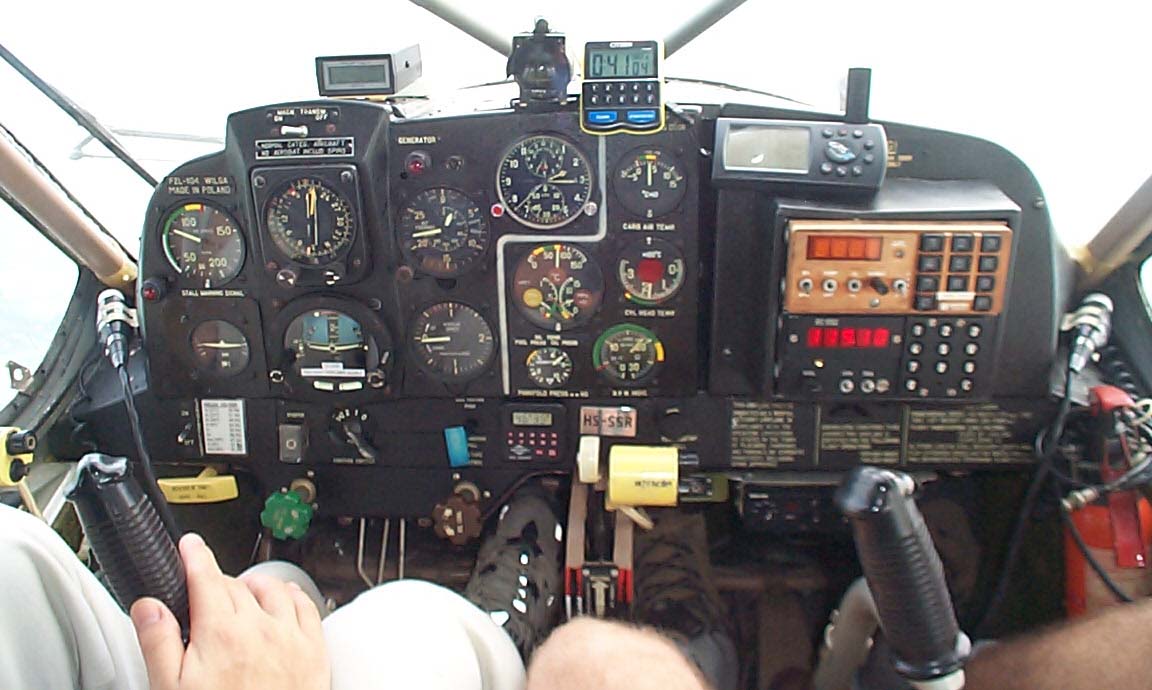
|
INSIDE THE WILGA |
Flying the Wilga is a unique experience. The altimeter reads 3,000 feet per one revolution. The gauges read in mm Hg or Kpa or something else. The propeller feels like a huge windmill when it is pulling you, and a big brake when you throttle back. The flaps feel like the collective on a helicopter, and the wheels seem to float back and forth are you are getting airborne. Turning the Wilga around is not easy either. You need to have enough speed and inertia to carry the tail around, because the brakes aren't very strong. The sound is guttural - a radial engine. With the doors off, you get blasted and oily. The throttle and trim fit comfortably in your left hand, and the stick in your right. It's a fun plane to fly.
|
|
The Wilga dash has the basic flying instruments. The DG adjusts electronically and has a different feel than most gyros. The artificial horizon must be caged and uncaged slowly. The clock has to be wound up before each flight. The intercom and radio transmit switches are located on the throttle quadrant. It takes a little while to get used to reading the altimeter in 3,000 foot increments. The engine instruments are basically green-yellow-red for simplicity. Start and shutdown are very unusual processes. |
|
The Wilga fuel selector valve and fuel primer lever are located on the floor of the Wilga between the two seats. The primer is used to inject fuel into the cylinders before starting. Even after running the engine, the primer is still used to make starting easier. The Wilga runs out of fuel very fast, so attention must be given to watching the fuel level sight glasses beneath the wing to monitor fuel quantity. The fuel selector has 4 positions: off-left-right-off. |
|
|
|
The electronics controls are located on a panel above the pilot's head. Notice the flap handle to the left of the avionics and master switches. The Wilga has only 2 deflected flap settings - 21 degrees for Take Off and 44 degrees for Landing. The trigger button on the lever must be depressed before moving the lever to a new setting. |
| The Wilga is started by an air bottle pressure system. This system works very well in cold climates, where the battery would not be strong enough to start the engine. The guage for the air pressure start is located on the floor on the right hand side of the pilot's feet. The valve for air pressure to the engine is controlled by the adjacent valve. When the air runs out of the bottle, it can be refilled from a ground bottle, or you can hand start the Wilga without too much difficulty. |
|